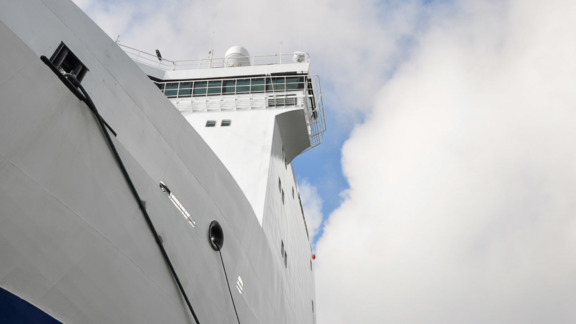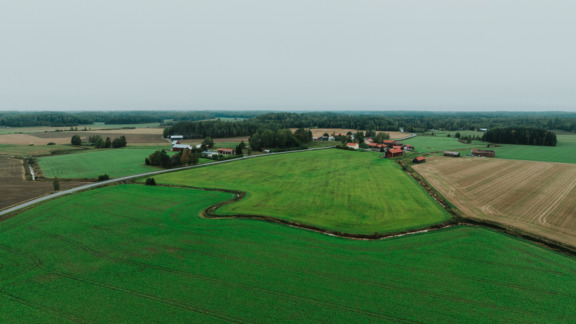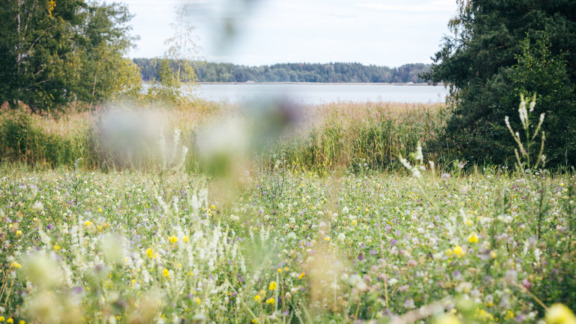European agriculture policy at crossroads – does the Baltic Sea perspective matter?
The EU Common Agricultural Policy is one of the strongest drivers of land use in Europe. It is now being drawn for the next seven-year period (2021-2027) – drafting work taking place both on the EU and national levels. The CAP, and how its budget of over 300 billion euros is distributed, will have a significant impact on our attempts to mitigate climate change as well as on the health of the Baltic Sea. The EU CAP budget will be cut by around 10% from the previous period and this will be felt by individual farmers, but it will also affect the allocation of budget between direct support, per hectare payments, possible conditional incentives and the rural development support.
The CAP, now 57 years old, has undergone more or less comprehensive revisions, health checks and greening attempts before each new financing period since 1992. The greening of hectare support in the previous period was not a successful improvement neither from the perspective of the environment nor that of the farmer. Now, the EU Commission has proposed that the CAP 2021-2027 framework would make part of the hectare support voluntary for farmers under so-called eco-schemes, which would mean a significant change in the basis and allocation of a big portion of the budget. A major overall change in the new CAP is the added nationalization in the content and implementation of the policy, based on the national CAP Strategic Plans incorporating the whole policy framework and funding across the former pillars 1 and 2. The Commission also proposes that minimum 30% of the rural development budget is allocated to climate and environmental measures. On the aggregated EU level, this would mean a notable, nearly 10% point increase from the previous period, which of course has to be mirrored against the reduced absolute budget. Looking at the Baltic Sea riparian countries (or federal states in the case of Germany), no country exceeded 25% allocation in agri-enviroment-climate measures in the previous budgets.
So what is the stake for the Baltic Sea in this? What should be taken into account? How would the Baltic Sea draw up the CAP plans? Arable land covers 22% of the Baltic Sea’s drainage area and most of this is south of the Gulf of Finland. The most important agricultural regions in the EU part of the Baltic Sea catchment, are Denmark, the county of Scania in the southern tip of Sweden, North East Germany, Poland and Lithuania. Out of these, Latvia, Lithuania, Poland and the two federal states of Germany had the smallest RDP allocations (5-13%) to agri-environment-climate measures among all Baltic Sea countries.
Reflecting on this history, and the many and repeated assessments of the CAP not being effective and targeted enough in terms of the environmental objectives, the Commission proposal discussed above can be seen as a solution to expand the coverage of environment and climate measures, raise the ambition level and increase their effect. By tightening and further specifying the prescriptions of conditionality (SMR, GAEC), offering financial incentives through the eco-schemes, it’s understood we can steer agriculture as a whole to adopt more sustainable farming and soil management practises through mechanisms connected with hectare support. This is also the view of the EU Parliament’s agricultural committee which recently approved the position that the eco-schemes should be operationalized with a minimum budget allocation of 20% of the direct payments. This kind of a policy, raising the standards of sustainable agriculture overall, is more likely to lead to a more favourable development also from the perspective of the Baltic Sea.
This view is, however, not shared by Finland and Sweden, the two countries having the most at stake regarding the environmental state of Baltic Sea. These countries have traditionally favoured the voluntary path in terms of additional environmental measures in the CAP and this position appears to prevail. Raising the environmental ambition of conditionality and offering incentives or result-based compensation through the eco-schemes is not enjoying support from these two countries, a scenario which means that most of the support would be handed out to all farms complying with the basic elementary standards. This scenario eats into the spirit and the motivation of the farmers having already adopted more sustainable practises and in the worst case could worsen the environmental performance of European and Baltic Sea region agriculture overall.
Our global challenges and their local phenomena, like decline in biodiversity, extreme weather and eutrophication of water bodies, are reaching such scales and magnitudes, that we must see things in a longer time horizon and make fundamental changes in our economic systems and the policies steering our society. The EU Common Agriculture Policy must take a step onto the path where we gradually phase out subsidies which contribute to soil degradation and biodiversity decline and steer public budgets increasingly into sustainable land and soil management practises. It is critical to support and incentivize the adoption of such practises widely across the whole sector, calling for their horizontal adoption across the CAP.
We need more holistic, integrated and systematic approach in the design of the policies which aims for a living soil which sequesters carbon, withholds water and nutrients and gives better yields. This gives a basis for both plant and animal production and resource efficient circular agriculture. Agriculture which also allows the Baltic Sea to recover and restore its diverse underwater life.



